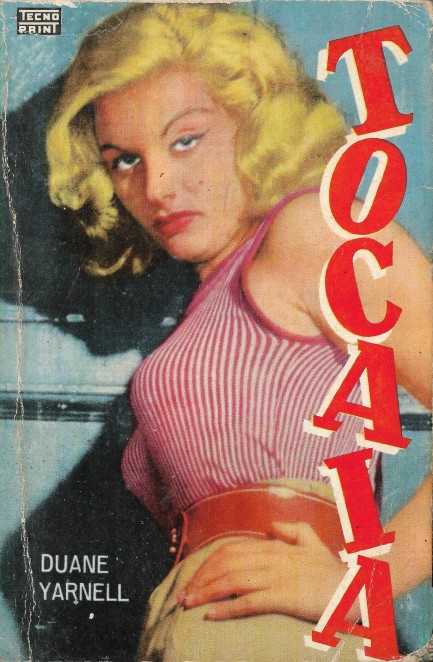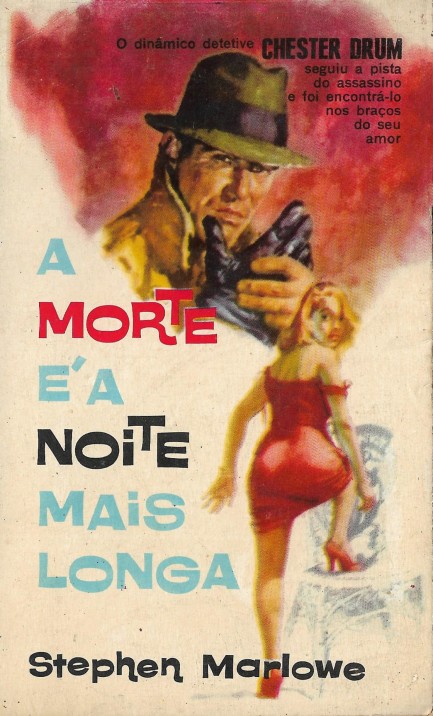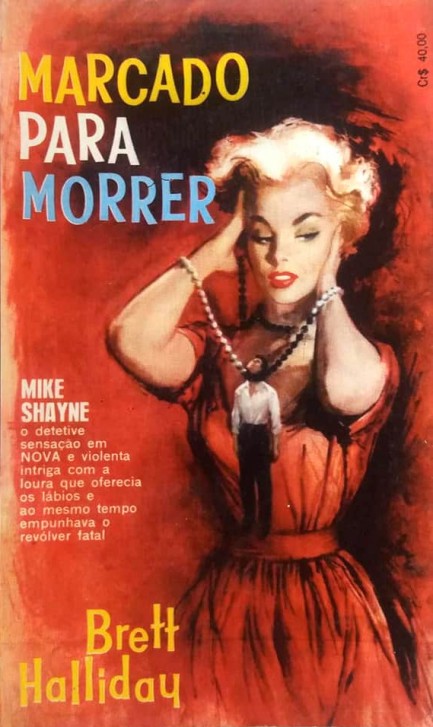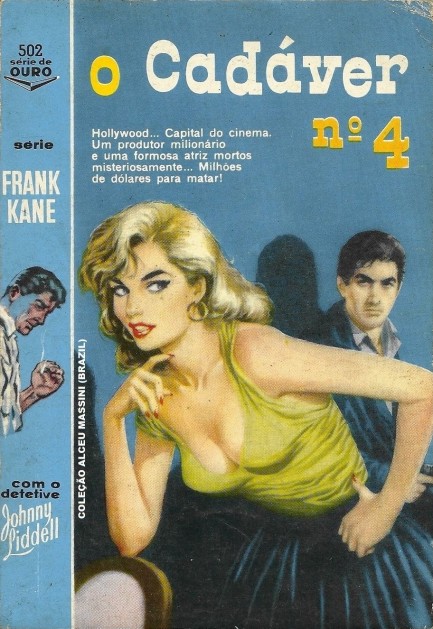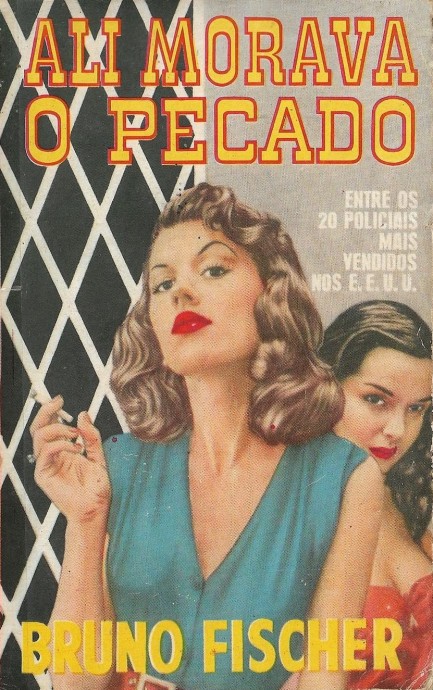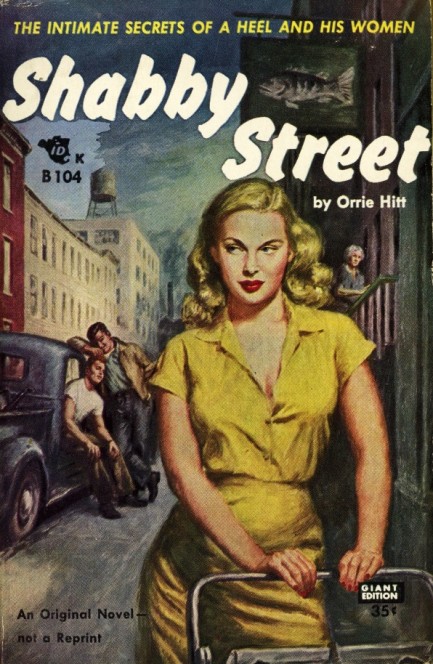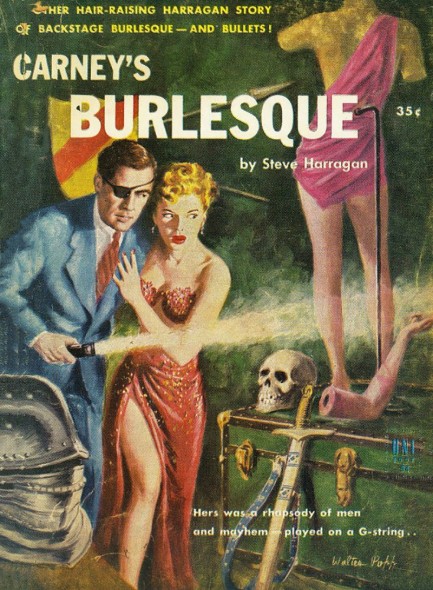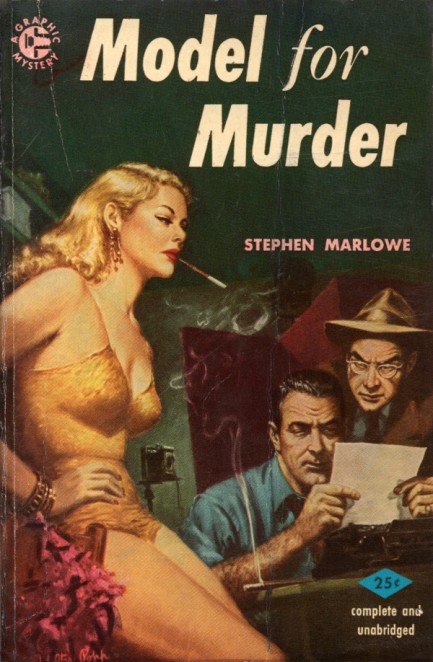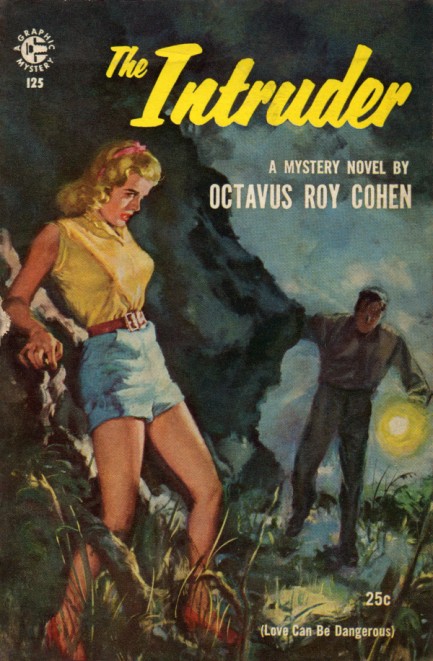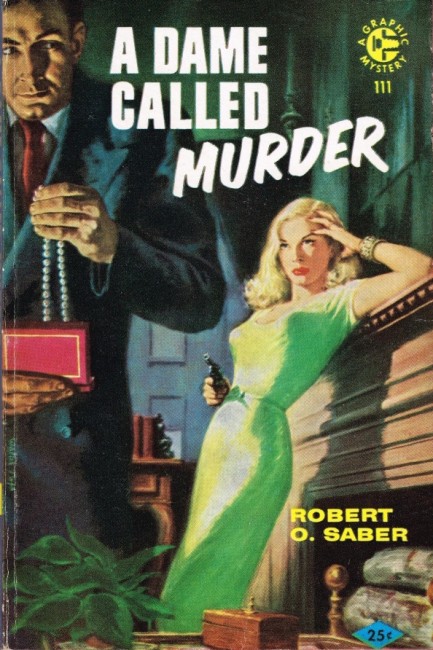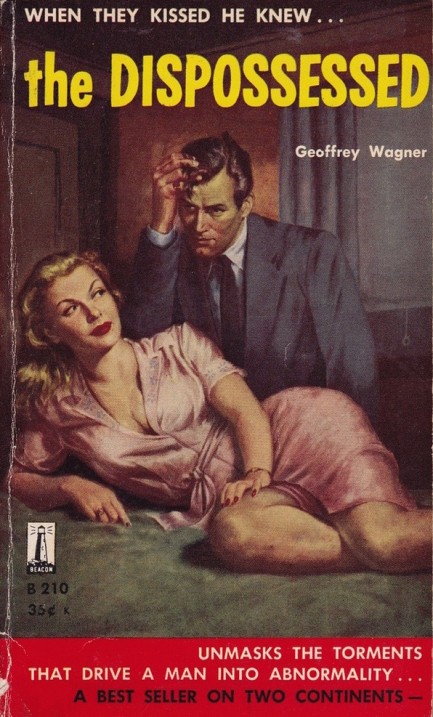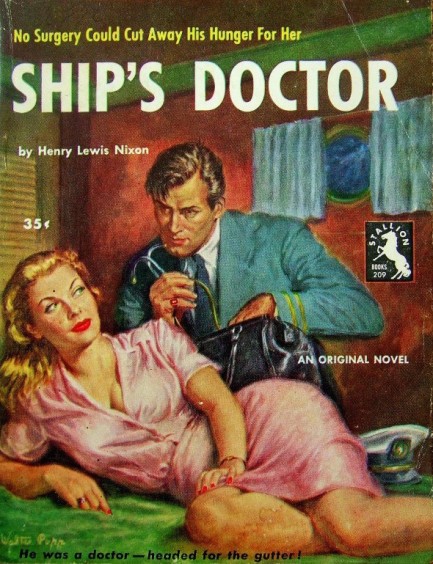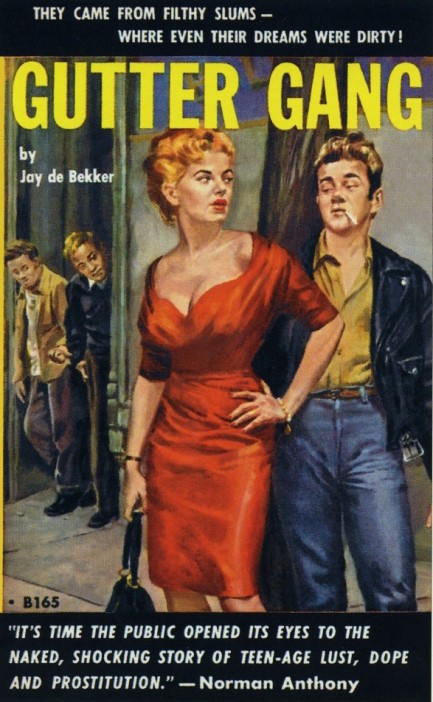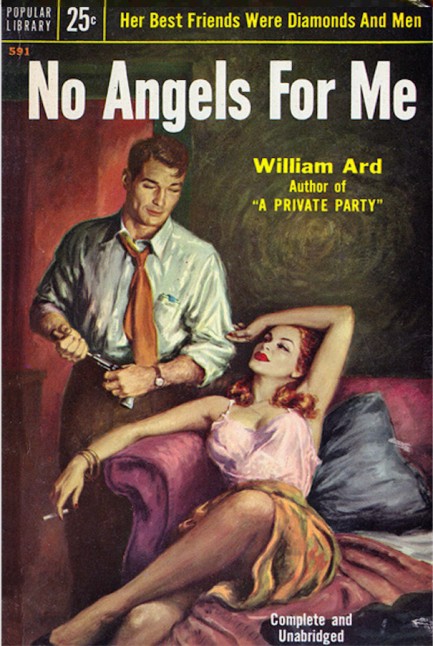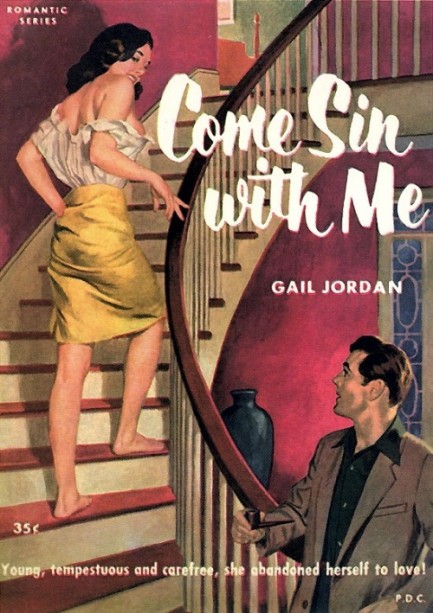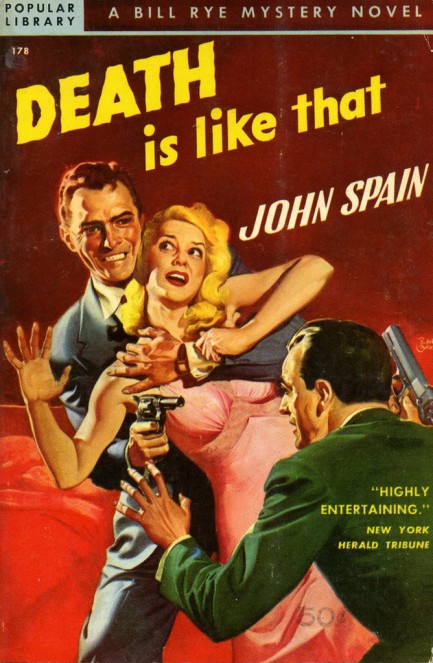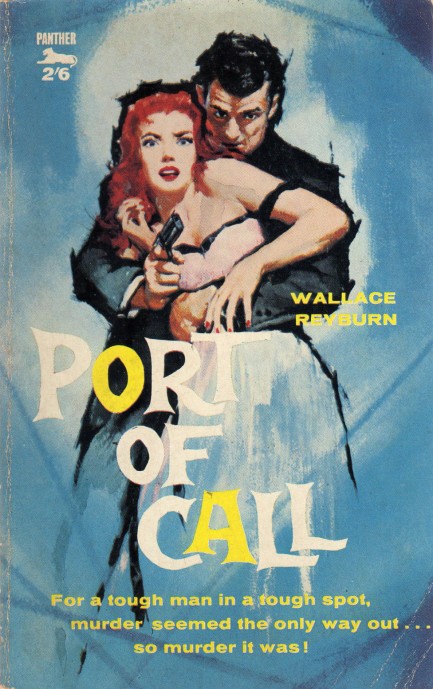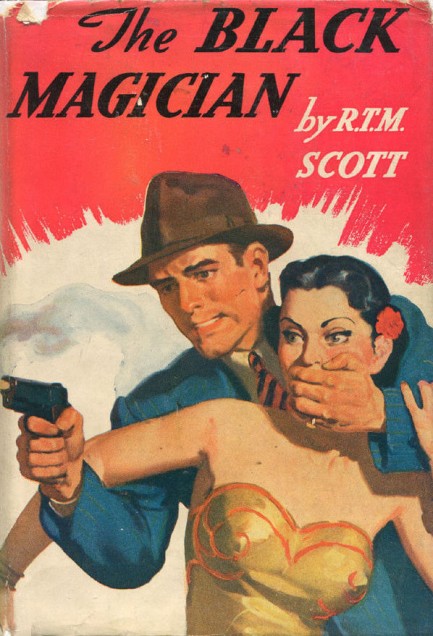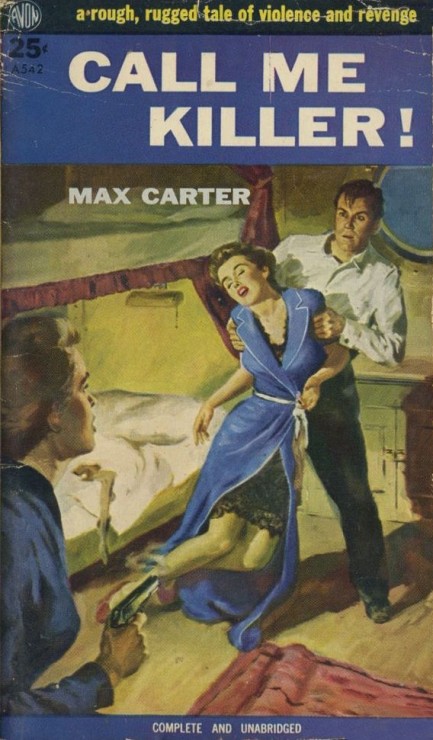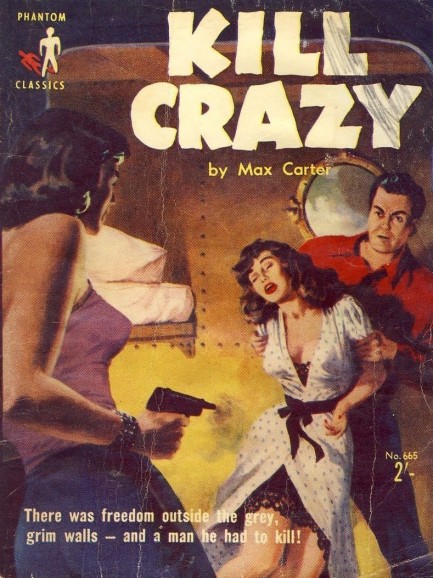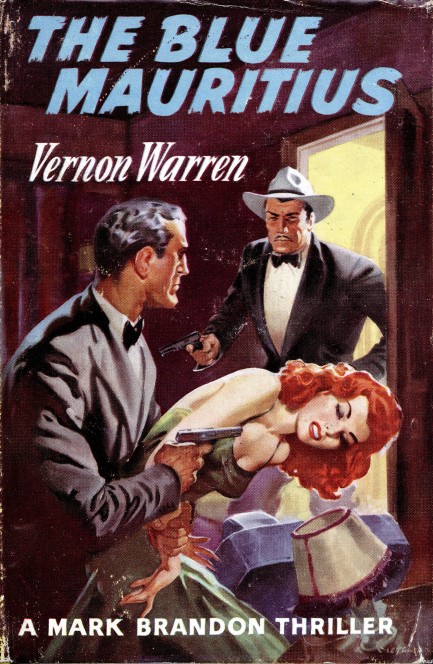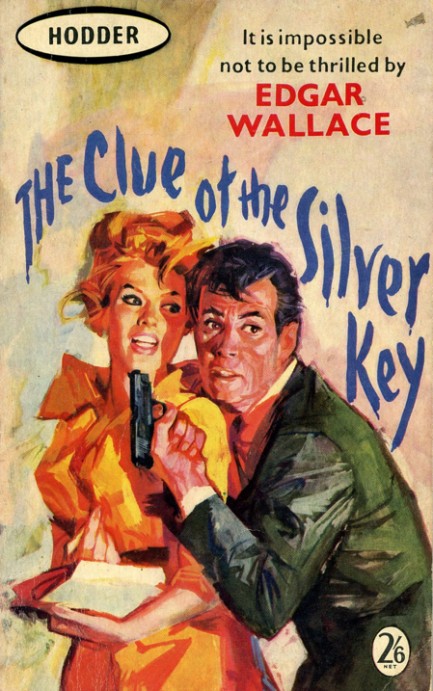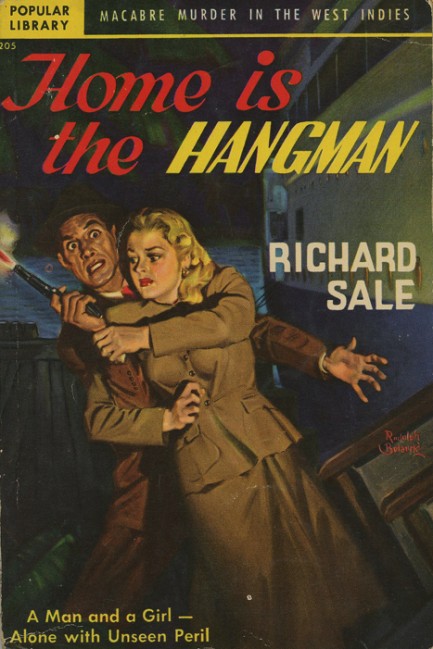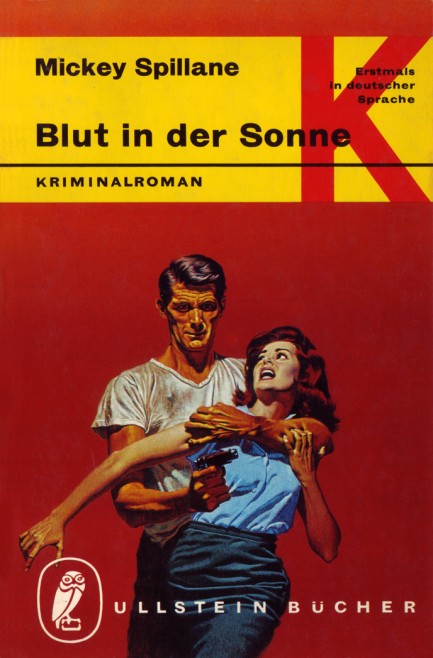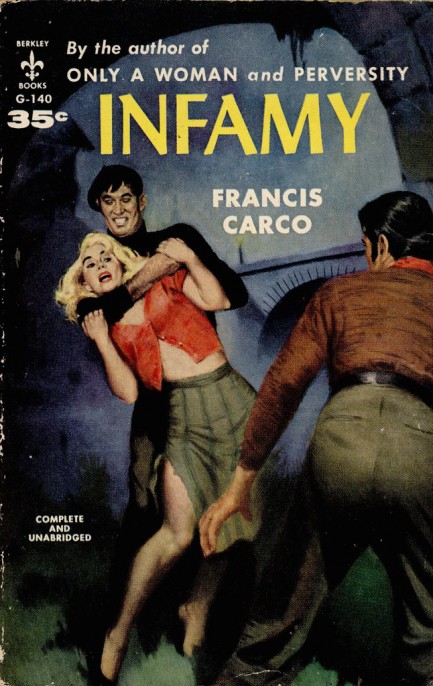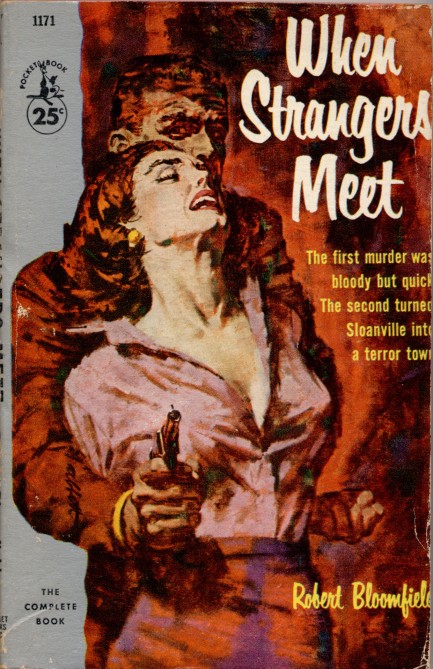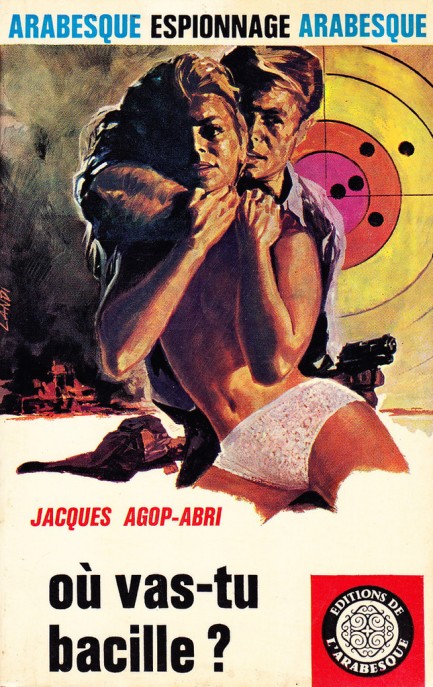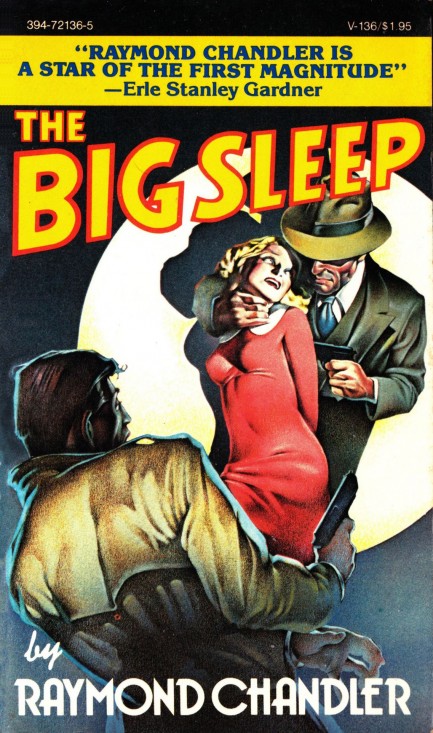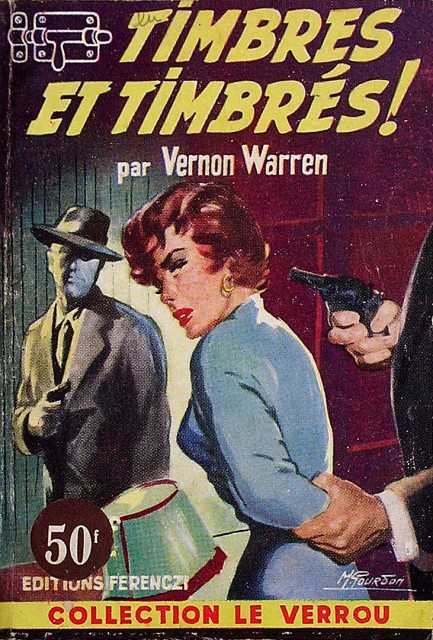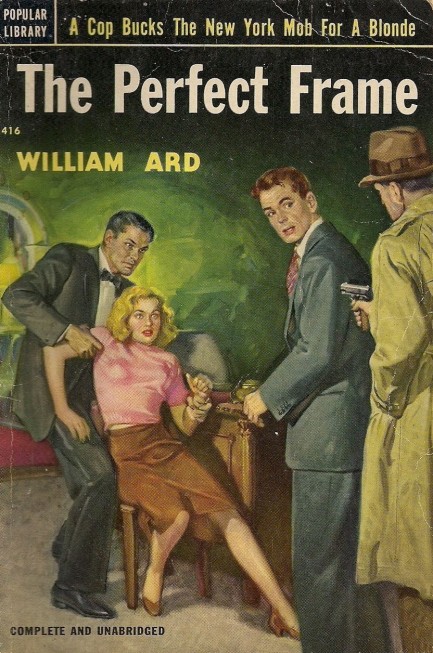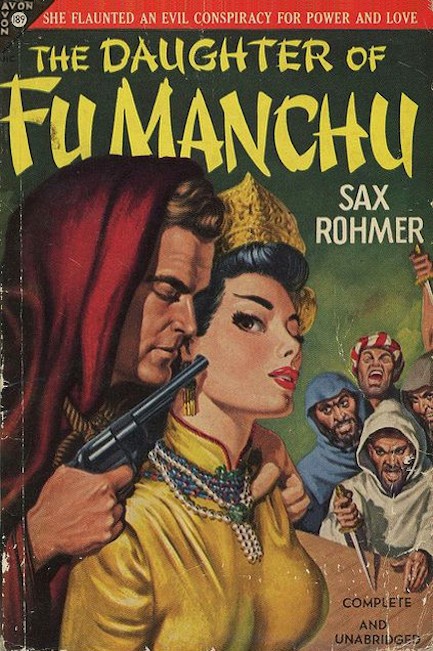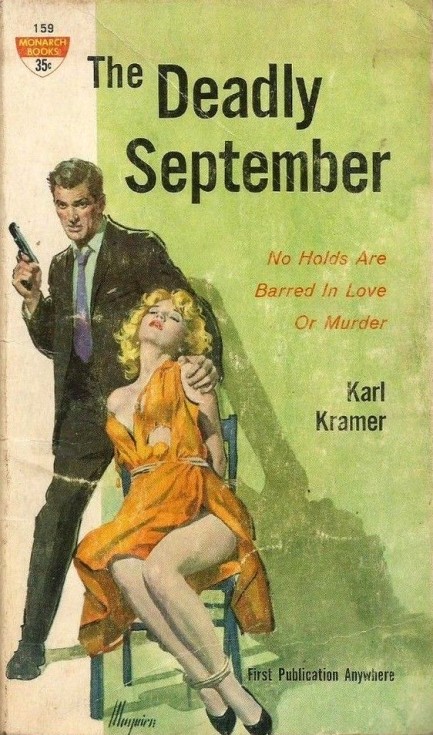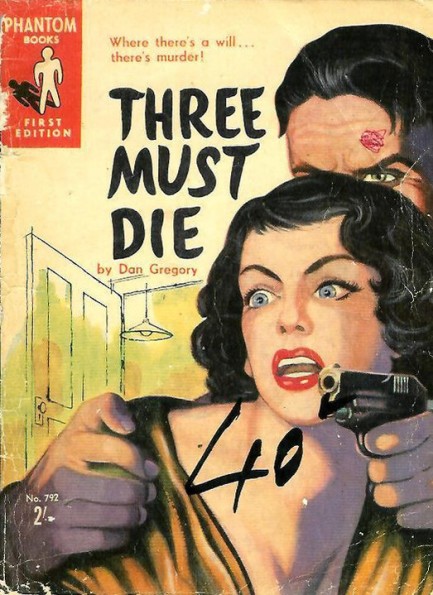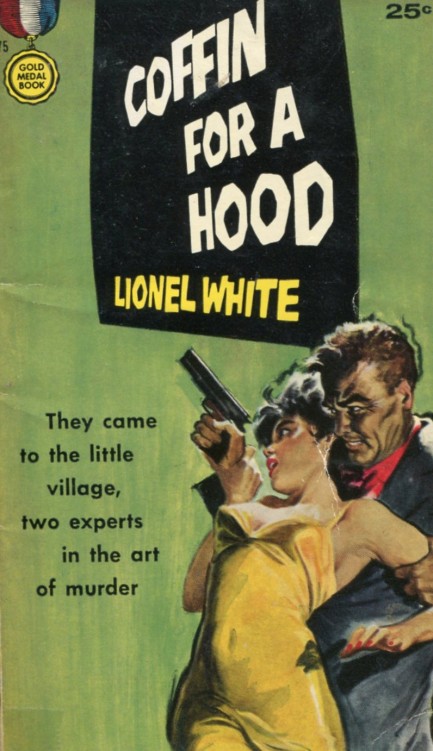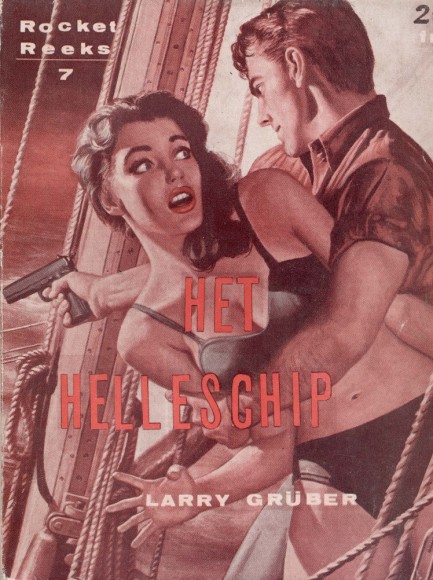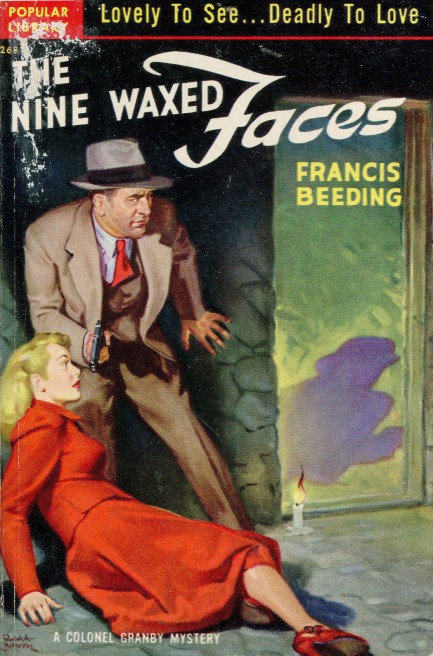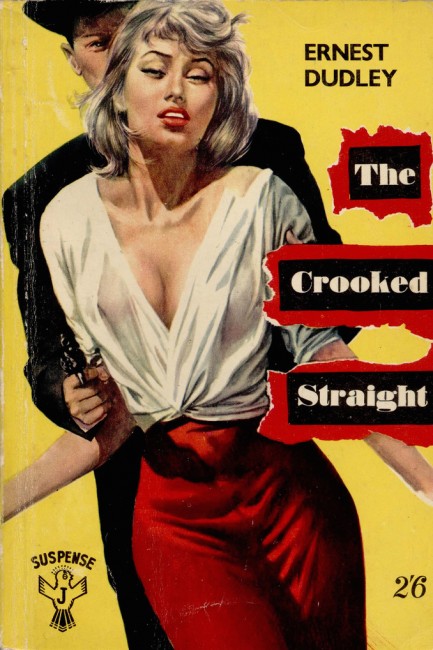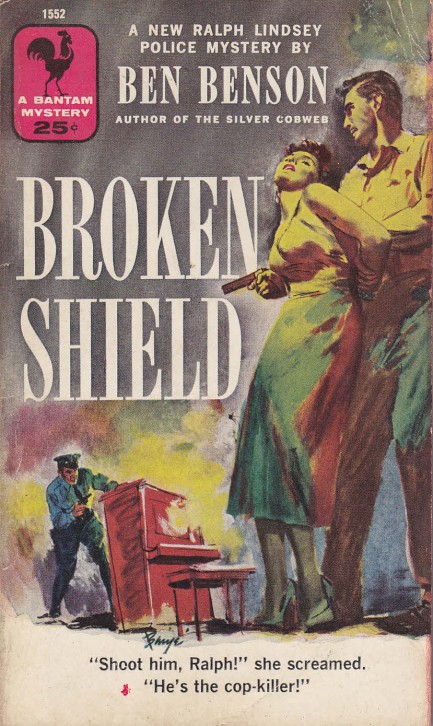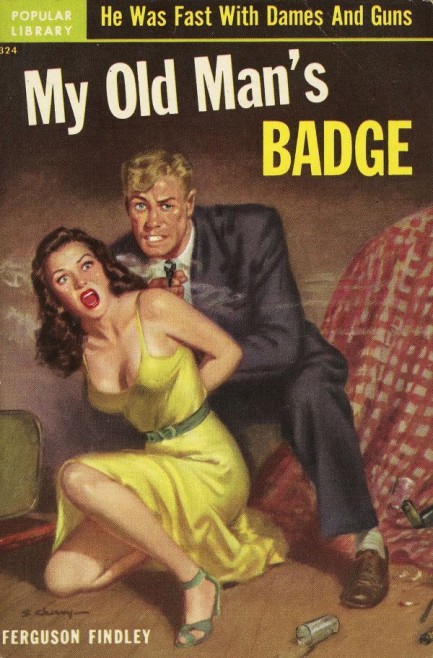 Temperatures rise and tempers fray in Ard thriller. 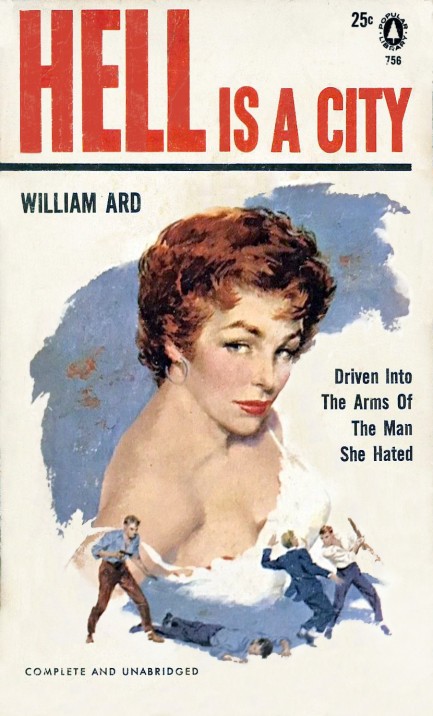
We've been searching for everything we can find by William Ard because his books have been consistently good. This Popular Library edition of 1955's Hell Is a City has George Mayers cover art. We dove right into it, and the narrative (which is unrelated to the movie of the same name) focuses again on Ard's NYC private investigator Timothy Dane, who this time tries to prove that a slam-dunk murder charge is a frame put together by a predatory cop.
Ard reveals this in chapter one, when young Jamie Colyero, barely more than a boy, shoots the cop who tries to rape his sister Rita. The cop had been after her for weeks, and finally plants heroin on Jamie, engineers an arrest, then tells Rita the charges can possibly dropped if she meets him at a hotel and gives up her goodies. Out of desperation to help her brother, she agrees.
Unbeknownst to her, she's followed to the hotel by her brother, who's out on bail, and Jamie kicks in the door and ruins the cop's plan—lethally. Dane is in the picture shortly thereafter, working for a newspaper editor who wants to expose the lies of a rival sheet that has used its pages to turn the dirty cop into a saint. All of this will swing the next mayoral election, so the stakes are as high as can be.
Long story short, the book is great. Like other Ard tales it moves exceedingly fast for a piece of vintage fiction, racing through numerous twists and scrapes, with intermittent bursts of action, until it reaches a conclusion that shakes the city to its foundations and leaves readers satisfied. If you enjoy 1950s crime novels, read anything by Ard. You won't regret it.
 Fontaine returns for another deadly installment of the hunger dames. 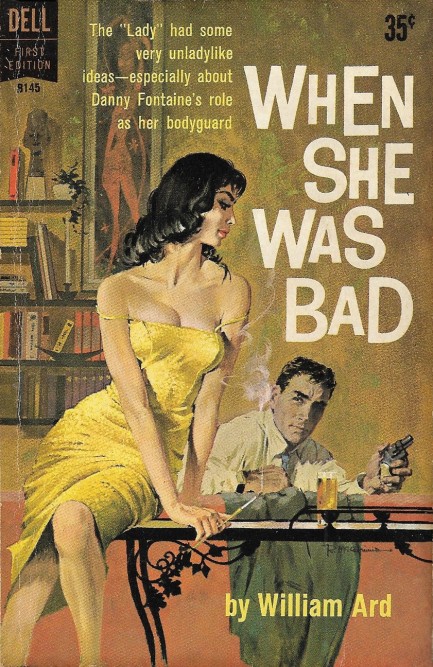
It's official. William Ard, in all his incarnations, is a trusted author. In 1960's When She Was Bad, the follow-up to 1959's As Bad As I Am, Danny Fontaine is now a fledgeling detective on his first case. Many mid-century detectives are ladykillers, but Fontaine is on a level that silences rooms when he enters. He's what women these days might amusingly call a “dilf”—a detective I'd like to fuck. His job is to locate a missing minor royal, a thrillseeker who's caused a ruckus from Grand Bahama to New York City but now may be in trouble way over her head. Fontaine mixes with women ranging from a marquess related by marriage to the Queen of England to a trio of top rank call girls, and they all fall hard for him. His efforts to earn his wings as a private operator under these circumstances are often funny and always exciting. Simply put, Ard's got skills. The cover art on this Dell edition is by Robert McGinnis, and he's got skills too.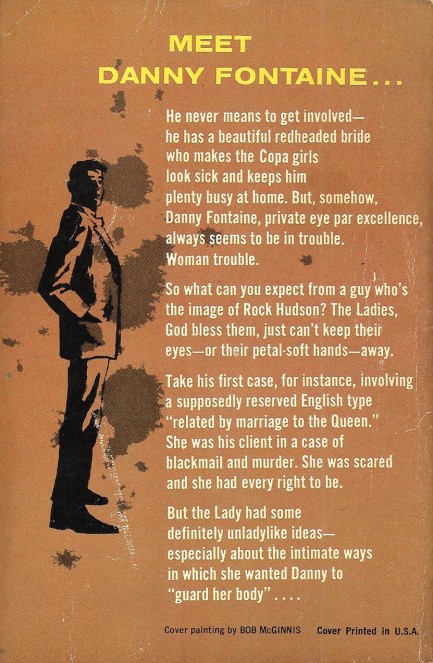
 Do you ever put the gun away? I'm just wondering because you'll probably need two hands for what I have planned. 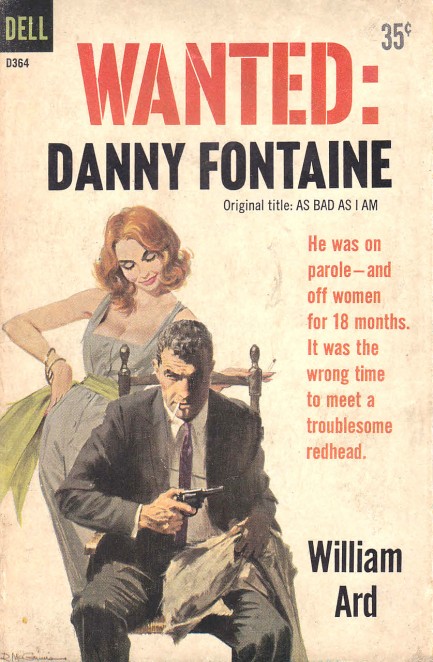
We recently called Barye Phillips a ubiquitous illustrator, but we keep running into Robert McGinnis too. Which mid-century artist do you suppose painted the most paperback covers? Surely both Phillips and McGinnis have to be in the running. Here's the latter's masterful work on the cover of William Ard's Wanted: Danny Fontaine, a 1960 re-issue of 1959's As Bad As I Am. In this novel the title character has just been paroled after his third prison stint. Because his crimes always involve helping damsels in distress, a provision of his parole is that he must stay away from women for eighteen months. That's not easy. He has movie star looks on a six-four frame, and an overt but non-aggressive masculinity wrapped inside a genuine charm that verges on innocence. All of that makes him irresistible to women. But the fact that his probabtion officer can't wait to send him back to prison offers all the motivation he needs to keep his life unentangled.
Unfortunately, Fontaine gets entangled anyway. He gets involved in a cop killing, at which point a beautiful actress named Gloria Allen risks everything to come to his aid. We thought it was a clever thematic reversal by Ard after taking such lengths to portray Fontaine as a habitual white knight. The man who's gone to prison three times rescuing women is doomed unless a woman helps him—and at great risk to herself, since the police have gone full vigilante in an attempt to avenge one of their own. While the plot Ard spins is unlikely in parts, and there are some of the issues regarding race that are endemic to vintage fiction, Danny Fontaine and Gloria Allen are both winning creations, the supporting cast is good, and the story is propulsive. With this one on his ledger, plus the excellent Club 17 and Deadly Beloved, we may have to elevate Ard to our top rank of vintage crime authors, that lofty designation we like to call “trusted."
 No, my husband doesn't mind that I have sex with other men. Though he probably would if he knew. 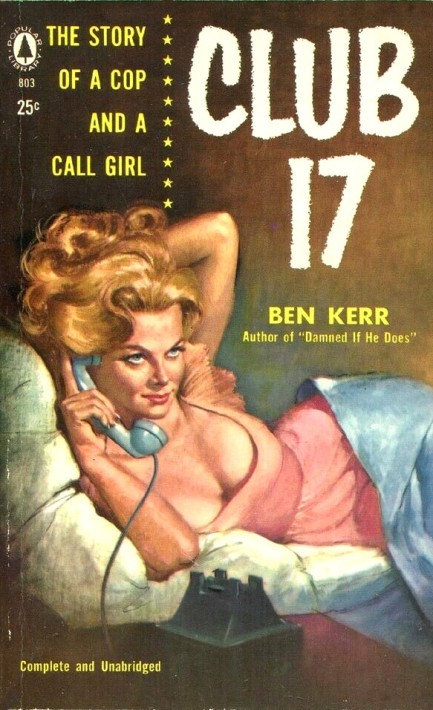
Ben Kerr, who we first knew as Mike Moran, then William Ard, might make the trusted author category. His 1957 novel Club 17 is a nice little yarn. It deals with a down-on-her-luck actress finally driven to prostitution, but her first customer is a vice cop out to bust the crime ring she works for, which operates out of an unassuming Manhattan watering hole called Club 17. She can't go through with the deed, which transforms the cop's appraisal of her from hooker to sweetheart, and romance is born.
We know what you're thinking, but the same old motif of love at first sight works because Kerr writes fast and with style. He had to write fast—he churned out three books a year, but his work didn't suffer for it. Some writers just have that gift. He pulls together a cohort of major characters—the cop, the call girl, the groomer, the pimp, a political climber, his two-timing wife, and a private investigator—and effortlessly sets the narrative spinning within only twenty pages.
Turning to the cover, which is amazing, it's unattributed, but we think it's by Ray Johnson. He was working with Popular Library from at least 1955 onward, as we've shown you here and here. The rear cover below reinforces our conviction on this. Look below and note the hair, the shape of the face, and that certain lift of the eyebrows, then check the links. He's the prime suspect. If so, excellent work, from a top rank illustrator.
 Packed with flavor and fortified with the recommended daily allotment of vitamin f. 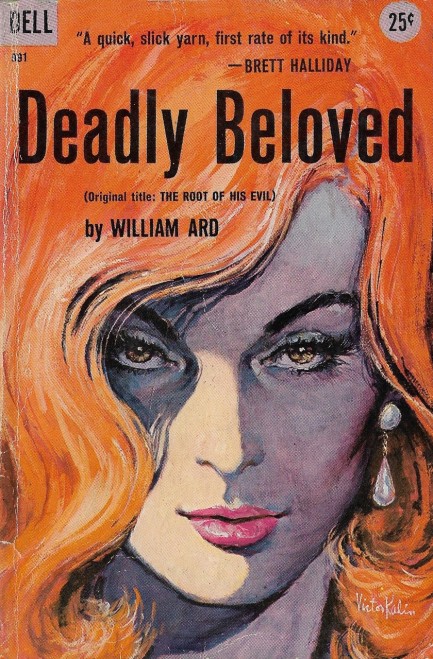
Victor Kalin went the tight focus route with this cover of an orange femme fatale he painted for William Ard's 1958 thriller Deadly Beloved, also published as The Root of His Evil. We love the art, and we loved the book too. An insurance investigator named Tim Dane is hired to transport a $100,000 gambling debt from an unlucky loser to a Miami hood named John Cashman. Cashman plans to use the money to help finance a war in Latin America, but that's just background. The more immediate part of the narrative involves an exotic dancer named Lissa, real name Elizabeth Ann Miller, who he has ringfenced with the help of 24/7 bodyguards and a lifetime management contract. Dane ignores warnings to keep away and is soon giving Lissa deep nocturnal lovin'—a pleasure that could cost his life if Cashman finds out about it. Ard, who also wrote as Ben Kerr, Mike Moran, et al, is a talented stylist with an approach all his own. His way of cutting transitional exposition is pretty neat. Every writer is required to do it, but Ard can cross town within the space of a sentence and still not sound like he's rushing. We're already trawling the auction sites for more from him. Highly entertaining. 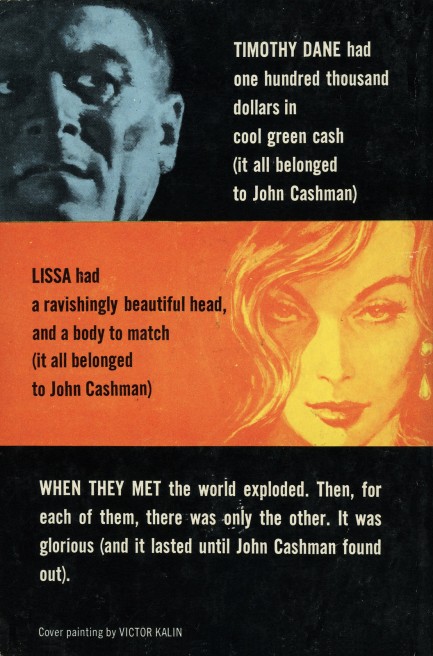 Edit: We got an e-mail asking exactly what we meant by "cutting transitional exposition." We don't want to search through the book for an example, so we'll make up one. It would go something like this. "He decided he'd have to drive to Coral Gables to ask Cashman in person, and two days later when the door opened to his knock, he was surprised that it wasn't a servant but Cashman himself who answered."
 First of all, hell no. Second, why are you wearing lipstick? And third, crushed strawberry is not your color. 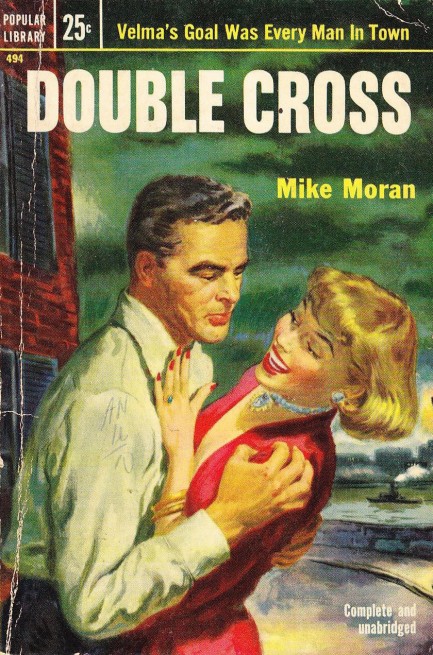
When it comes to mid-century fiction, basically all the guys had problems respecting women's boundaries. There are so many covers of the above type we could curate an entire collection. We can't think of any others, however, where the guy looks like he's wearing lipstick. We checked a few other examples of this one online, just in case this look was courtesy of some kid with a crayon, but he's wearing that crushed strawberry in all of them. Not that we disapprove. More guys probably should do it. We've done it, and it was fun, if not even educational. But maybe we're drilling too deep into this subject. Boundaries we were talking about, right? So, Mike Moran was aka Ben Kerr, Jonas Ward, and Thomas Wills, and this book deals with a private eye who takes a job bodyguarding a boxer who's run into problems as the night of a big bout approaches. Reviews are mixed to middling. But this cover opens the door to all sorts of discussion, which makes it worth sharing. 1953 on this.
 Actually, the flap on my bikini does slim the hips. It also hides pistols. Now get your hands up, idiot. 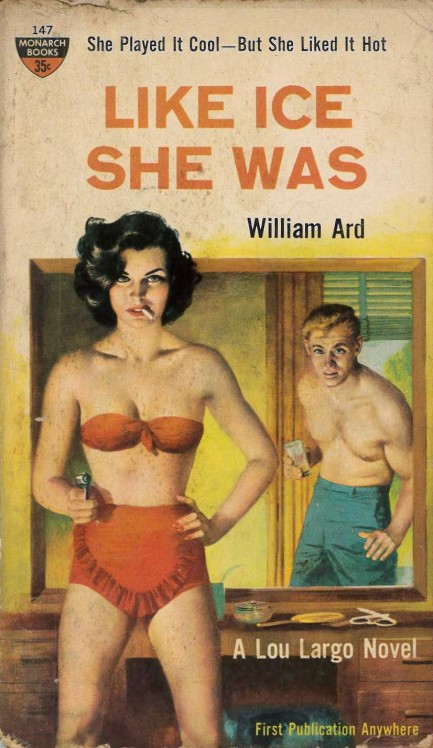
William Ard's Like Ice She Was stars his detective creation Lou Largo in a missing persons case. He's looking for a former prostitute who robbed a Montreal casino owner and fled to Miami. He finds her, but the situation escalates to murder and an attempted frame-up. This character was supposed to tentpole a series, and it did, but this was the second and last Largo written by Ard, as he died after writing it. The books thereafter were ghost written by Lawrence Block, and later John Jakes. Like Ice She Was is copyright 1960, and the Monarch Books cover guide has the art as uncredited, which is a shame.

|
 |

The headlines that mattered yesteryear.
2003—Hope Dies
Film legend Bob Hope dies of pneumonia two months after celebrating his 100th birthday. 1945—Churchill Given the Sack
In spite of admiring Winston Churchill as a great wartime leader, Britons elect
Clement Attlee the nation's new prime minister in a sweeping victory for the Labour Party over the Conservatives. 1952—Evita Peron Dies
Eva Duarte de Peron, aka Evita, wife of the president of the Argentine Republic, dies from cancer at age 33. Evita had brought the working classes into a position of political power never witnessed before, but was hated by the nation's powerful military class. She is lain to rest in Milan, Italy in a secret grave under a nun's name, but is eventually returned to Argentina for reburial beside her husband in 1974. 1943—Mussolini Calls It Quits
Italian dictator Benito Mussolini steps down as head of the armed forces and the government. It soon becomes clear that Il Duce did not relinquish power voluntarily, but was forced to resign after former Fascist colleagues turned against him. He is later installed by Germany as leader of the Italian Social Republic in the north of the country, but is killed by partisans in 1945.
|

|
|

It's easy. We have an uploader that makes it a snap. Use it to submit your art, text, header, and subhead. Your post can be funny, serious, or anything in between, as long as it's vintage pulp. You'll get a byline and experience the fleeting pride of free authorship. We'll edit your post for typos, but the rest is up to you. Click here to give us your best shot.

|
|














